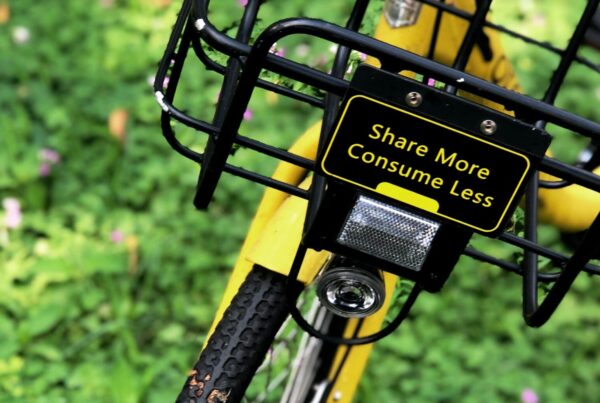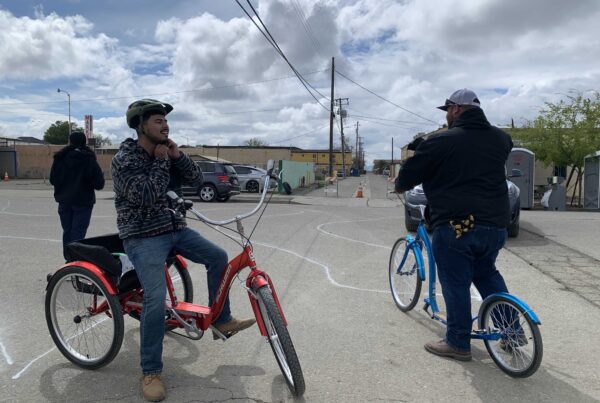If you are a city official, planner or transportation geek, you probably got at least a little swept up in the excitement around the “Smart City Challenge” earlier this year as nearly 80 cities competed to win $40 million in funding from the U.S. Department of Transportation (plus an additional $10 million in matching funds from Vulcan).
Last week, mayors from the contest’s seven finalist cities presented their pitches on why they should be selected. The winner will become the first in the country to fully integrate innovative technologies – including self-driving cars, connected vehicles and smart sensors – into its transportation network, thanks to the USDOT’s support.
Even if your city isn’t in the running, however, you can still benefit from the new ideas generated as a result of the challenge. SUMC took a look through the applications of the seven finalists and pulled out some of the best and most innovative mobility ideas to consider in your next long-range plan:
1. Portland, OR: Variable Bikeshare Pricing
Portland’s smart city proposal includes a variety of innovative programs focusing on the city’s new “Biketown” bikesharing system, which is set to launch this coming July. One particularly interesting detail is Portland’s plan to implement variable bikeshare pricing to encourage users to self-rebalance bikes and refill empty stations.
The pricing model would fluctuate depending on when in the day a user picks up a bike and where they travel. For instance, riders could receive discounts for ending their trips in key destinations (like in the downtown core just before rush hour) or at empty docks.
By relying on riders to keep bikes circulating throughout the system, instead of rebalancing using trucks, Portland’s approach will also help reduce the overall carbon footprint of its bikeshare system and free up workers to focus on other aspects of the program.
Additionally, the data from Portland’s “smart” bike technology would also feed into a shared, IT-enabled network of transportation information that bikeshare riders could use to find the fastest and safest routes in real time.
2. Columbus, OH: “Smart Corridors”
Columbus, Ohio’s proposal features a series of “Smart Corridors” that would act as testing grounds for new solutions to improve access to transportation within the city. Specifically, the corridors would help address first/last mile gaps along Cleveland Avenue, which connects to many major employment centers, as well as in the city’s Linden neighborhood, which has unreliable access to jobs and health services, and high unemployment.
To help overcome Linden’s mobility barriers, Columbus’s plan suggests subsidizing new multimodal options such as e-hailing and carsharing to increase transportation access for disadvantaged residents. Other possible tactics mentioned are inclusion of private sector services in public transportation planning applications, offering backing from the City for insurance and liability needs, and guaranteeing specific quantities of trips.
Columbus’s focus on using new solutions to increase service to low-income and low-density neighborhoods offers a great example for other cities to follow.
3. Kansas City, MO: Real-Time Mobility Kiosks
Kansas City’s Smart City Challenge proposal builds on some of the innovative projects already underway in the city, including the construction of 25 interactive digital kiosks that will display information on transportation options, including shared mobility.
The kiosks will aggregate multiple lines of mobility services to inform users, in real time, which modes of transportation are located nearest to them, and help them determine the most effective method of travel given current traffic conditions. For instance, if the roads are congested, the kiosk system may advise that bikesharing, or using KCATA’s dynamic shuttle service, is the most efficient mode of transit.
The digital kiosk concept is being pursued in other cities as well, including a project in New York City called LinkNYC, which will allow residents and visitors to access free WiFi and travel information. However, Kansas City’s program is unique in that its interactive interface will provide real-time shared mobility information, helping to improve visibility and use for a wide variety of transportation options.
4. Pittsburgh, PA: Electric Autonomous Shuttles
Pittsburgh is quickly becoming a center for autonomous vehicle innovation. Last year, Uber and Carnegie Mellon University announced a strategic partnership to create the Uber Advanced Technologies Center in Pittsburgh (before Uber eventually hired away many of CMU’s researchers). More recently, there have been sightings of self-driving Uber vehicles prowling the city’s streets.
To build on this momentum, Pittsburgh’s Smart City Challenge proposal included creating an autonomous shuttle route along the city’s Electric Avenue. The route would help ensure the safe operation of autonomous EV shuttles, and would expand to a wider geographic network over time.
Pittsburgh would also use the data generated from the project to inform future decisions for autonomous EVs to ensure they meet a variety of goals, including a 50 percent reduction in greenhouse gas emissions and a greater reduction of traffic deaths through Vision Zero. Finally, the project would also include the construction of charging stations on a city-owned lot that would draw power from a solar canopy.
It will be exciting to see which project gets the green light from USDOT later this month. No matter who wins the Smart City Challenge, however, many of these cities have likely generated the necessary impetus to move forward on their smart mobility projects, even without the $50 million prize.
The Shared-Use Mobility Center will continue to track these projects and provide updates. To stay up to date on the latest trends and developments in shared mobility, be sure to sign up for our newsletter and register for the 2016 National Shared Mobility Summit!
Photo credit: Brian Donovan



